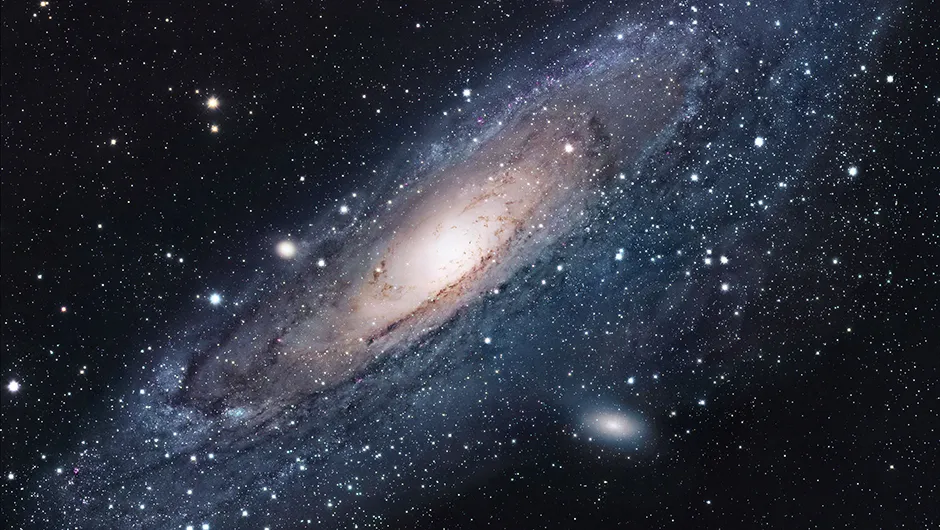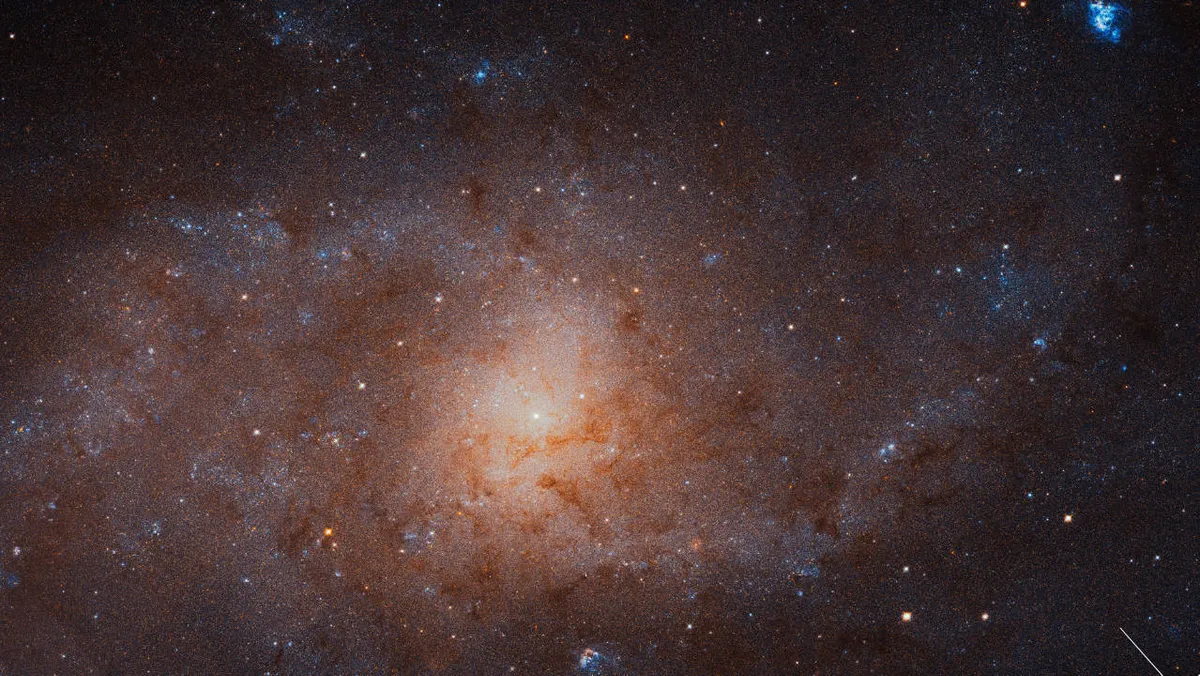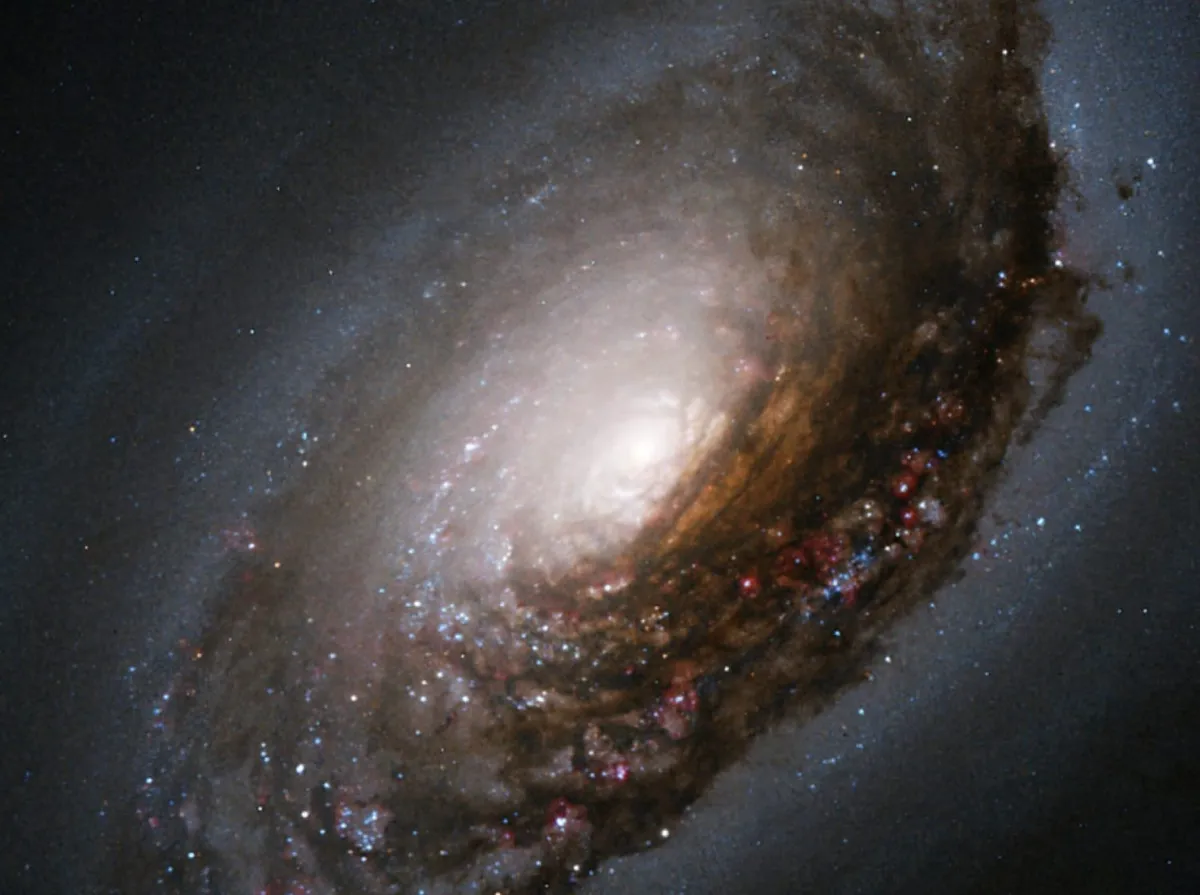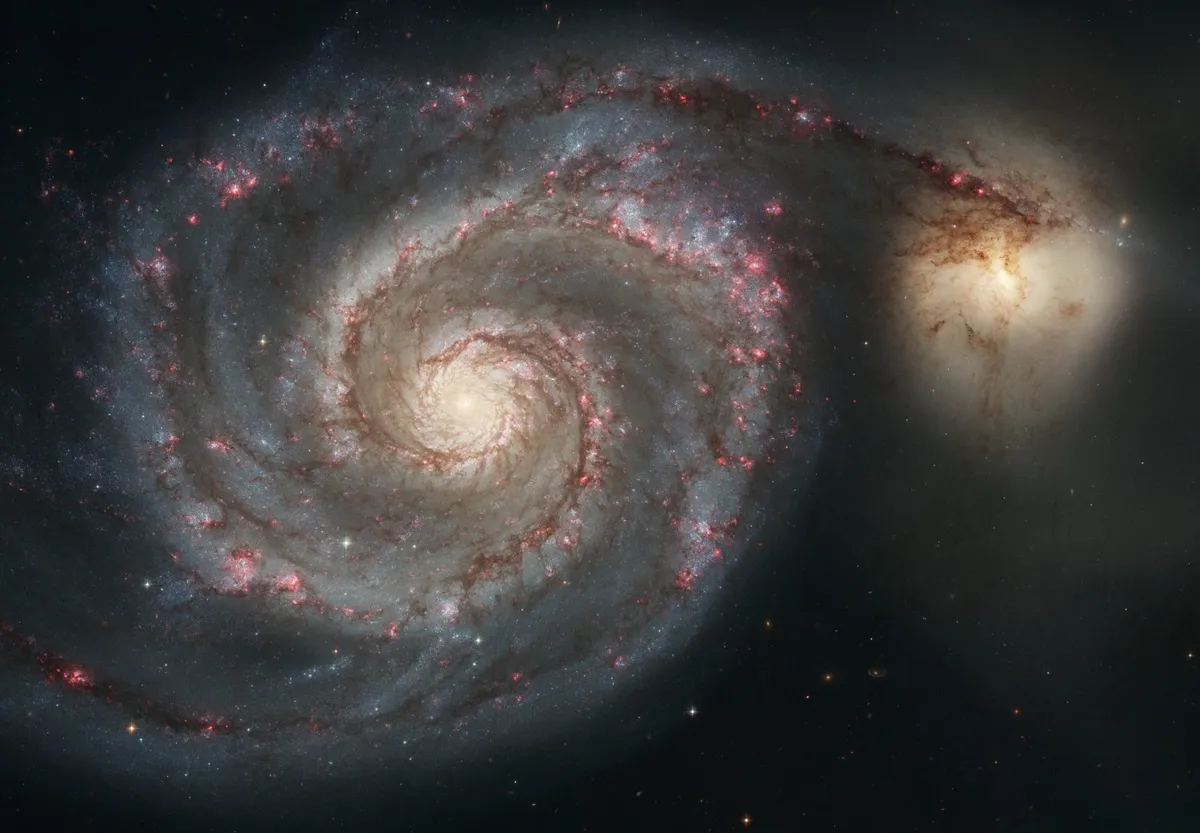Autumn is a particularly good time to hunt galaxies.There are two main reasons for this.First, we are back to the season of dark skies, and since galaxies are faint objects, darkness and clarity are essential.
Secondly, the night sky is not so dominated by the rich regions of the Milky Way, the galaxy to which we belong.
In the summer and winter, on the other hand, galaxies are hidden by the dust in our own system.
Relatively barren areas are the best places to look for very remote objects, millions of lightyears away.
Very few galaxies can be seen with the naked eye, and the only two that are prominent – the Magellanic Clouds – never rise over any part of Europe.
Binoculars will show a good many, but merely as dim and rather ill-defined ‘smudges’.
Neither will direct telescopic observation provide much more – the view through a telescope will not resemble the glorious images you'll see below.
For this reason, many people used to look away from galaxies and turn instead to the glories of the Pleiades or the Sword of Orion.
Things are different now.
Amateurs using new equipment with telescopes of very modest aperture can obtain images far better than any professional observatory could have managed a few decades ago.
So go outdoors on the next clear night, set up your equipment and enjoy yourself in the company of autumn galaxies.
1
The Andromeda Galaxy (M31)

Other designation:NGC 224
RA:00h 42m 44s
Dec: 41° 16’ 17”
Andromeda is the only spiral galaxy that’s clearly visible with the naked eye, and it is a pity that it lies at an unfavourable angle to us.
The full beauty of the spiral is undeniably lost; however, photographs of it are most impressive.
Its distance is now given as 2.5 million lightyears. It is much the largest and most massive member of the Local Group of galaxies.
Just up and to the right of the star Nu (ν) Andromedae, M31 – sometimes still incorrectly called the Andromeda Nebula – contains objects of all kinds, and there are two conspicuous satellite galaxies, M32 and M110.
Many novae have been seen and in 1885 one supernova, S Andromeda, was the first ever supernova to be observed outside the Milky Way.
At present M31 is approaching us and in the remote future it will merge with our Galaxy.
The graceful spirals will then be destroyed and the end product will be a single giant elliptical system.
However, there is no immediate cause for alarm, as the collision will not begin for another thousand million years.
2
The Triangulum Galaxy (M33)

Other designation:NGC 598
RA:01h 33m 50.9s
Dec: 30° 39m 36s
This must be my choice for runner-up, because it is the third largest system in the Local Group of galaxies and under excellent conditions it can just be detected with the naked eye in the constellation of Triangulum.
The distance of the Triangulum Galaxy is approximately 3 million lightyears from Earth.
It is spiral, though its arms are less tightly wound than its larger neighbour Andromeda.
You can see it in the same wide-angle binocular field as the star Alpha (α) Trianguli.
Look past the fainter star 1 Trianguli and at about an equal distance beyond it, in the direction of Beta (β) Andromedae, you will find the haze of M33.
It’s a fascinating target for photographers, with its obvious spiral form.
If you are hunting it for the first time, it is easier to sweep with binoculars than a telescope, because of its low surface brightness.
With my 12x80 binoculars, it’s just in the field with Alpha Trianguli.
3
Messier 64 The Black-Eye Galaxy

Other designation:NGC 4826
RA:12h 56.7m
Dec: 21° 41’ 8.8”
The Black-Eye Galaxy is a spiral in the constellation of Coma, 1° northeast of the fifth-magnitude star 35 Comae.
It owes its nickname to the dark patch of dust to the north of the centre of the system.
It is a large and very luminous galaxy, of integrated magnitude 6.6, located about 44 million lightyears away from Earth.
The central portion of M64 is very bright, and when viewed through small telescopes it can appear almost star-like.
4
Messier 51 The Whirlpool Galaxy

Other designation:NGC 5194
RA:13h 29m 52.7s
Dec: 47° 11’ 43”
Messier 51 is the most famous of all spirals and, with its companion NGC 5195, the most spectacular.
It lies in Canes Venatici, close to Alkaid (Eta (η) Ursae Majoris) – the leftmost star in The Plough.
The galaxy makes a triangle with Alkaid and the fifth-magnitude star 24 CVn.
The Whirlpool Galaxy can be rather elusive with binoculars, but under good seeing conditions my 15-inch reflector shows the spiral form when peering through the eyepiece.
It is 23 million lightyears away, and therefore well beyond the limit of the Local Group – the cluster of galaxies that includes the Milky Way.
5
Messier 74 Spiral galaxy in Pisces

Other designation:NGC 628
RA:01h 36m 41.8s
Dec:+15° 47’ 41.8”
I include M74 in my top five autumn galaxies for several reasons.
First, it’s a challenging object because of its low surface brightness, and the integrated magnitude is only 10.
Against this, it is easy to locate with a telescope, being 0.5° north and 1.5° east of Eta (η) Piscium – the brightest star in the constellation of Pisces at mag. +3.6.
M74 is a face-on spiral about 30 million lightyears away, and a good photograph of it is most rewarding.
It also appears quite large in the night sky, having apparent dimensions of 10.5 x 9.5 arcminutes.
The late Sir Patrick Moore was an astronomer, author and presenter of The Sky at Night.
